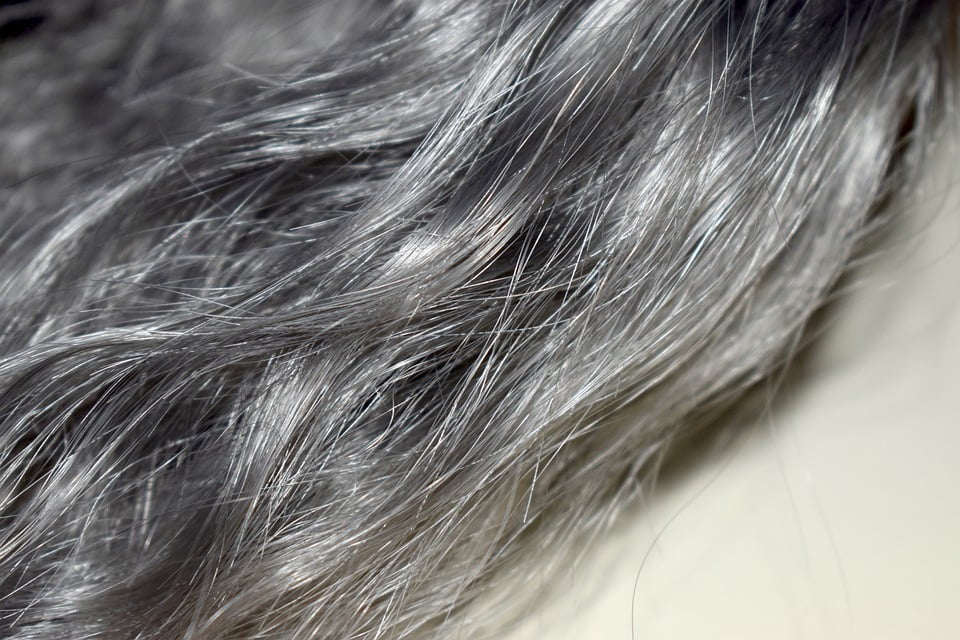There is an opinion that severe stress can cause almost instantaneous graying. We decided to check whether such stories are true.
Similar stories circulate about some historical figures. In particular, writethat the French Queen Marie Antoinette turned completely gray literally the night before her execution. This phenomenon even called in her honor. Same story they tell about the English philosopher Thomas More - a thinker who refused to recognize the English monarch Henry VIII as the head of the Anglican Church supposedly came out on the chopping block with completely gray hair, although the day before it wasn’t like that. Biographers reportthat the Russian poet Fyodor Tyutchev also turned completely gray overnight after the death of his first wife. Contemporaries rememberthat Admiral Kolchak also turned completely gray the night before his arrest. Such metamorphosis is also written about in fiction - take, for example, poem Anna Akhmatova "The Gray-Eyed King":
“Glory to you, hopeless pain!
The gray-eyed king died yesterday.
The autumn evening was stuffy and red,
My husband returned and calmly said:
"You know, they brought it from hunting,
The body was found near the old oak tree.
Sorry about the queen. So young!..
Overnight she turned gray."
For hair color answers melanin pigment. Its subspecies eumelanin gives the hair a dark tint, and pheomelanin gives it a reddish hue. Their ratio and determines whether a person will be naturally blond, brunette or red-haired. Areas of cells in the hair follicles are responsible for the production of melanin. With age (it is individual for everyone), less and less pigment is produced; accordingly, the hair growing from the follicle has less and less color saturation. At the same time, even using everyday observations, it is clear that the pigment usually does not disappear from already grown hair - gray hair is painted over exactly at the roots.
Medicine known There are also cases of poliosis - the absence in a certain area of follicles that produce melanin, which is why a person has a gray spot in his hair or a gray strand. An island of gray hair can be not only on the scalp - there are polioses localized on the eyebrows or eyelashes. Poliosis may accompany some genetic diseases are Waardenburg syndrome, neurofibromatosis type I, Piebaldism and tuberculous sclerosis. One of the celebrities living with poliosis, - Stacey London, stylist, TV presenter and beauty columnist.
In addition to the reduction in the amount of pigment produced, other factors play a role in graying. process. The cells responsible for the production of melanin produce both hydrogen peroxide, which is used, among other things, to bleach hair, and the enzyme catalase, which breaks down the peroxide, preventing it from reacting. However, with age, the balance is changing: The body produces less and less catalase, therefore, more and more peroxide remains unneutralized and reacts, giving the growing hair a gray tint.
No matter how severe the stress, it is not able to trigger an instant bleaching reaction for the entire mass of grown hair. Scientists held experiment on mice. The rodents were subjected to one of three influences: the first were locked in a cramped cage, the second were subjected to constant swinging of the cage, displacement and loud sounds, and the third were injected with a burning substance under the skin. The mice were then shaved and the color of the newly growing fur was monitored. Almost a third of the regrown hairs in the third group had no color. Further research made it possible to understand that this was due to the depletion of stem cells located at the base of the follicles. However, the reaction was not immediate - gray hair appeared after a couple of weeks.
At the same time, there is a plausible scientific explanation for what happened to Marie Antoinette, Thomas More, Fyodor Tyutchev and Admiral Kolchak. Scientists call this phenomenon canities subita - sudden graying. In 2013, researchers analyzed cases documented specifically in medical literature, rather than in biographies and memoirs, since 1800. A total of 196 cases of sudden graying were described in Dutch, English, French, German, Italian and Spanish. They divided them into groups based on previous exposure. The first group included descriptions of sudden graying after severe pain or against the background of a serious illness (mainly a major stroke). The second group included stress graying (after severe accidents, loss of loved ones or military action). The third included cases of graying combined with baldness, and the fourth included those occurring against the background of mental illness.
It is worth noting that the change in hair color was not permanent in all 196 cases. In some patients, the hair partially or completely returned to its color. Scientists were able to explain what happened by two factors. In some of those observed, the colored hair simply fell out (in science this is called alopecia areata diffusa - focal diffuse alopecia). In the second part, a change in the structure of the hair occurred, which resulted in the penetration of air into the hair and, as a result, the loss of its color. Most likelythat the case of Marie Antoinette is connected precisely with the first factor - the French queen’s colored hair simply fell out, observers did not evaluate the thickness of the hair and therefore reported a completely gray queen.
At the same time, other factors may be responsible for rapid, but not one-day graying. Chronic stress can call the kind of DNA damage that will cause our hair to turn white. Described also the case of a patient with alopecia areata treated with steroids. Within six months, her hair completely changed color, although she did not experience any severe stress during this period.
Thus, rapid graying (from several weeks to several months) can indeed be caused by severe stress or emotional upheaval. However, hair cannot completely change its color overnight. The historical cases most likely involved alopecia areata, where all or almost all of the colored hair fell out, leaving the appearance of a completely gray person.

Mostly not true
Read on the topic:
If you find a spelling or grammatical error, please let us know by highlighting the error text and clicking Ctrl+Enter.






